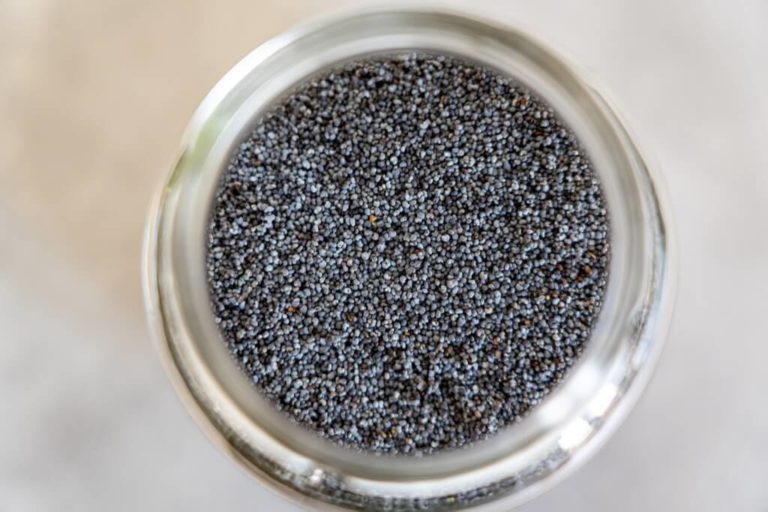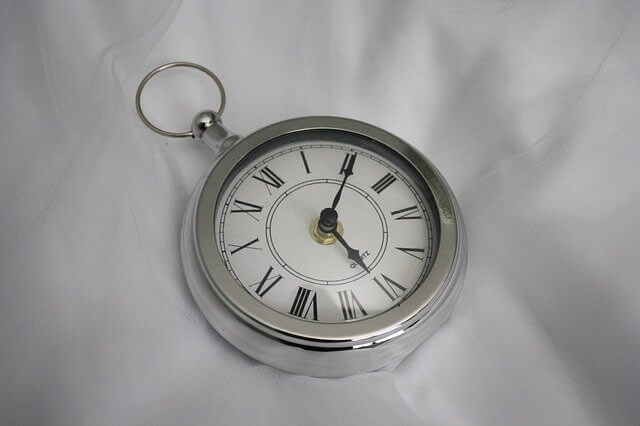BEGINNER GUIDE WEEK 1/4. HOW TO START INTERMITTENT FASTING
This is week 1 of a step by step beginner guide into intermittent fasting. There will be 3 more weeks of steps to follow. Links to any additional reading are provided within the article and below.
Let’s get straight into it.
1. DOWNLOAD A FASTING TRACKER APP
Tracking your fast will keep you accountable and help you to easily monitor progress. Make setting your app part of your daily routine. As soon as you finish your last meal, brush your teeth and set your fast tracker. These are clear physical signals that you’re done eating for the day. Now sit back and give your body enough time to digest and utilise all the food energy.
A great way to keep yourself accountable is to post your daily fasting screenshots on Instagram or whichever social platform you’re using. Post your attempts even if you don’t reach your target. Your goal at this stage is to create a habit and maintain accountability.
You can join me on LIFE FASTING TRACKER search for NEWMIBO circle where I interact daily, or feel free to download the app you prefer. Here is a comparison/review of some of the most popular free fasting apps.
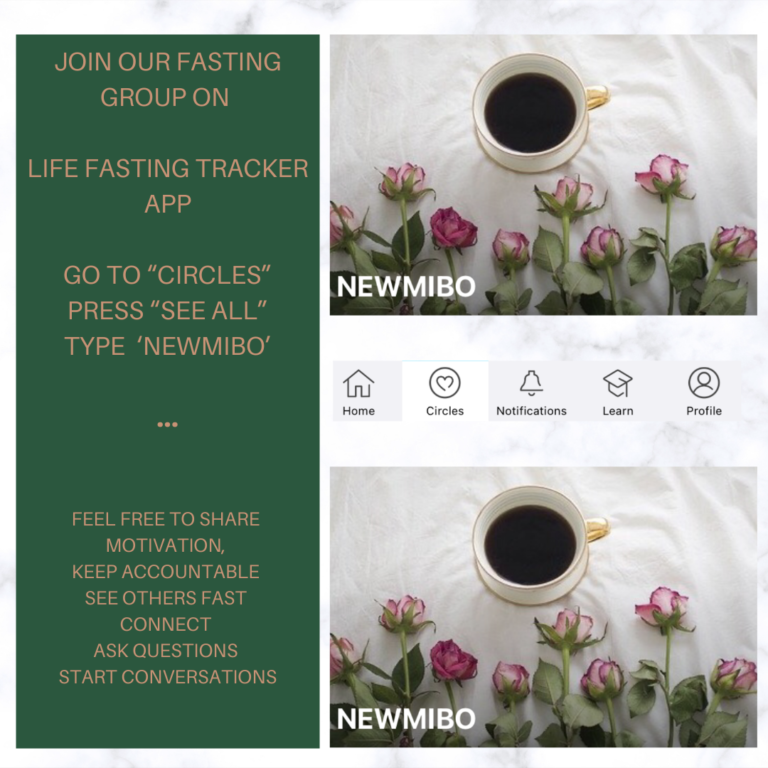
2. UNDERESTIMATE YOUR GOAL (BY 2 HOURS )
This may seem counter productive to you but trust me, setting you goal shorter than what you wish to achieve in the first week of a challenge will create a sense of achievement and encouragement. It will also motivate you to keep going. Many times I observed people getting discouraged when they end their fast early and see it as a failure which soon enough leads them to giving up completely. No one likes to “fail”. If you underestimate your goal you are likely going to exceed it, which will create a sense of empowerment, hence you will most likely carry on and not only that you will have acquired new motivation and excitement to go further.
Set yourself up to pass or surpass, not fail.
Here is an examples:
If your target is to fast for 16 hours, set your tracker for 14 hours. If your target is 20 hours, set your fasting app for 18 hours. Subtract 2 hours from your chosen fasting target.
Do it for 7 days. Trust me it works.
HOW TO START INTERMITTENT FASTING
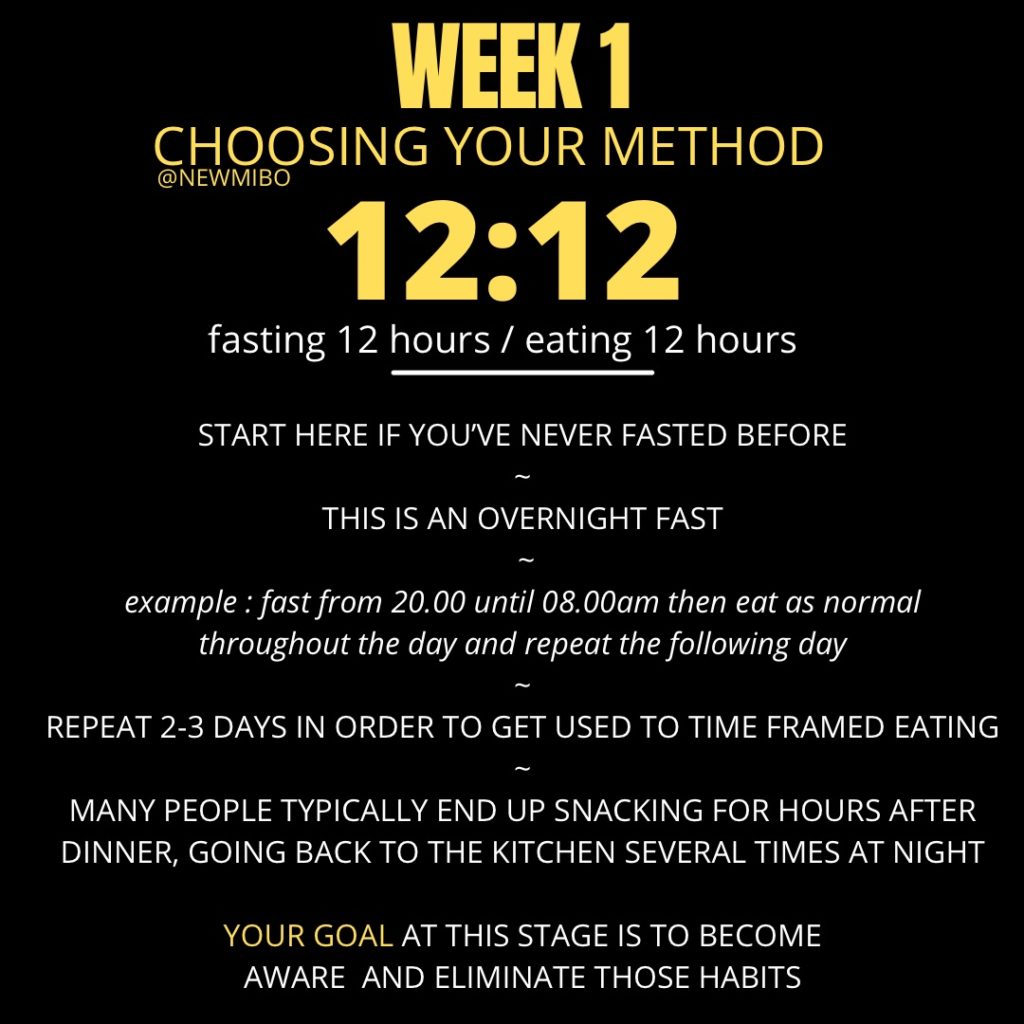
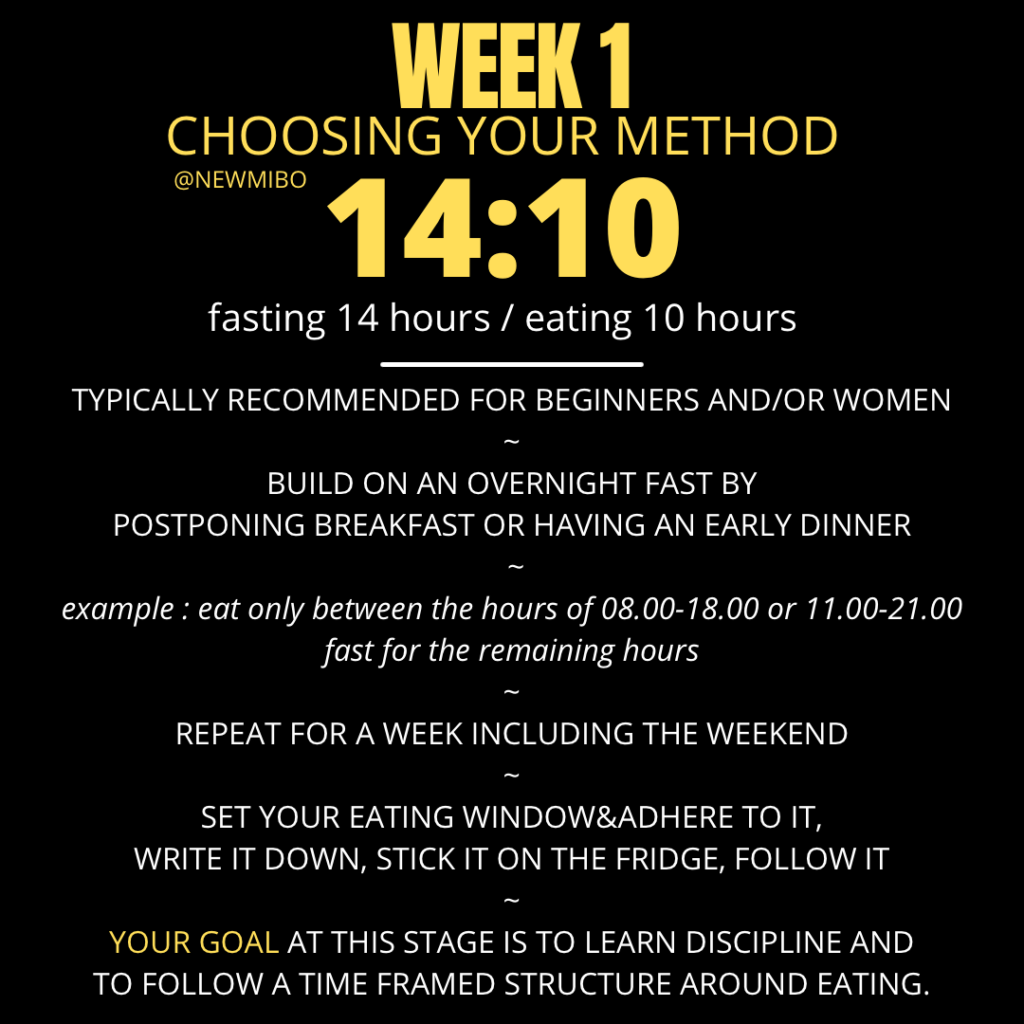
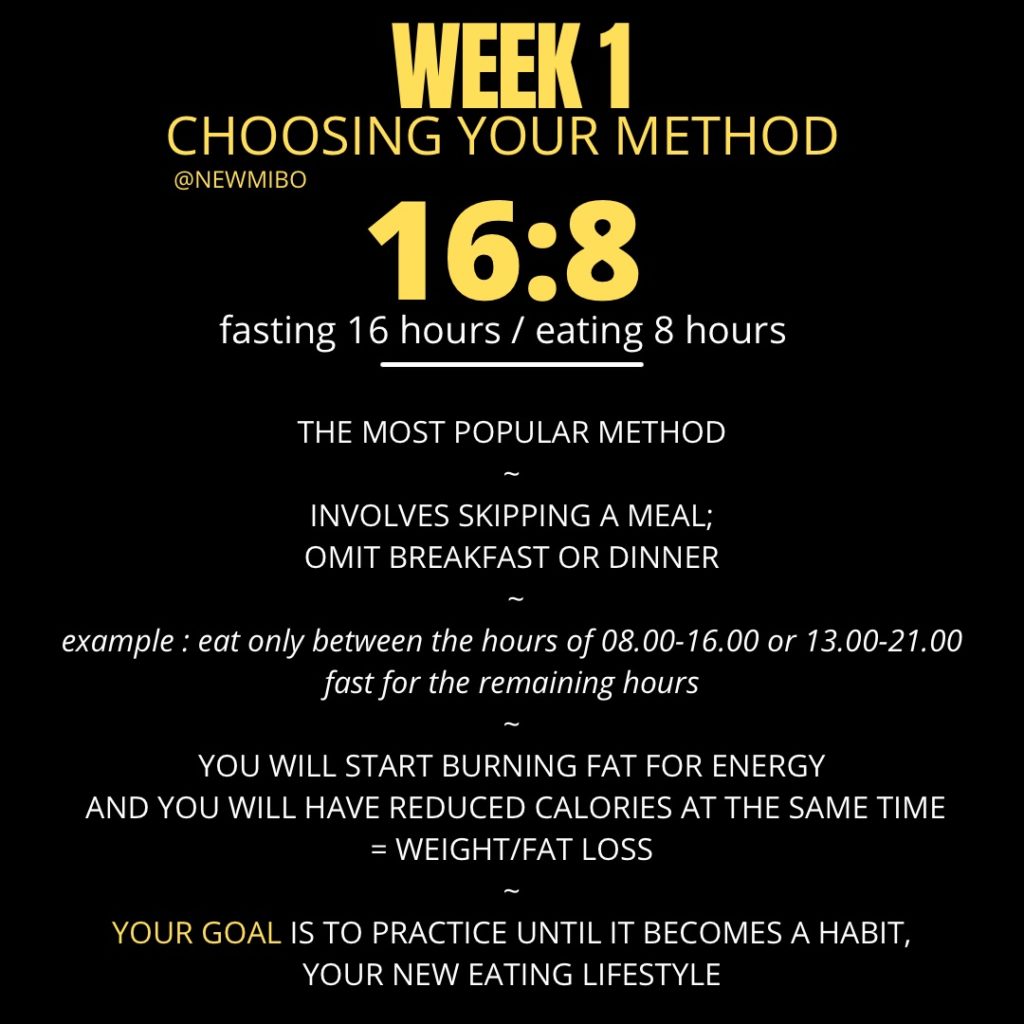
3. WEEKEND FASTING
You may not like this but yes maintaining your intermittent fasting lifestyle during the weekend is part of the deal. You can set a shorter fasting window of 12 to 14 hours as long as you stay in the fasting mind set.
If you’re practicing intermittent fasting 5 days per week and then stop for 2 days, you break the momentum which will make it much more difficult to jump back in. Imagine starting all over again every Monday. It will be difficult. What you want to do, is to rely on habit formation which requires no effort, rather than having to use willpower every Monday. Save your willpower for other tasks.
If you want fasting to work for you and not against you, maintain the fasting mindset over the weekend too, especially at the beginning of your practice. One compromise would be setting a shorter fasting window, an overnight fast is still a fast, or simply commit to skipping breakfast at the weekends.
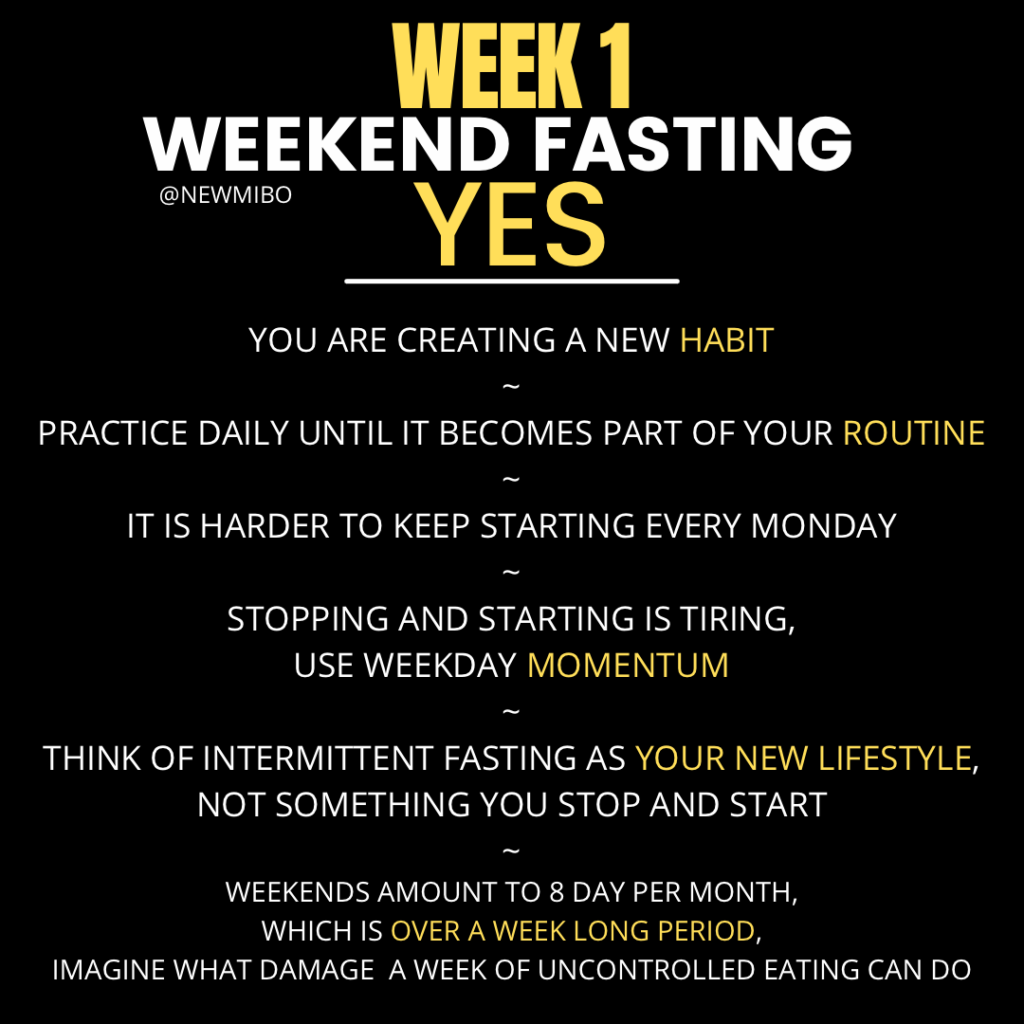
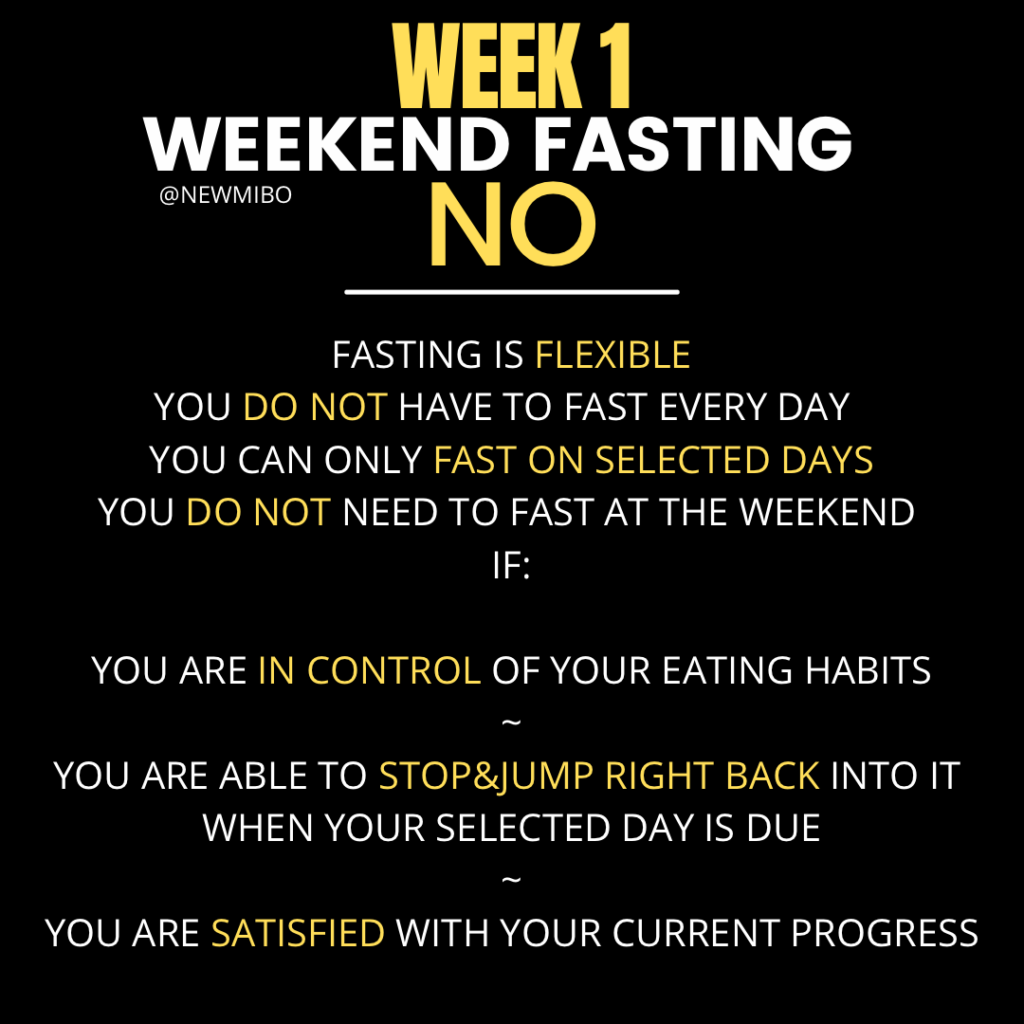
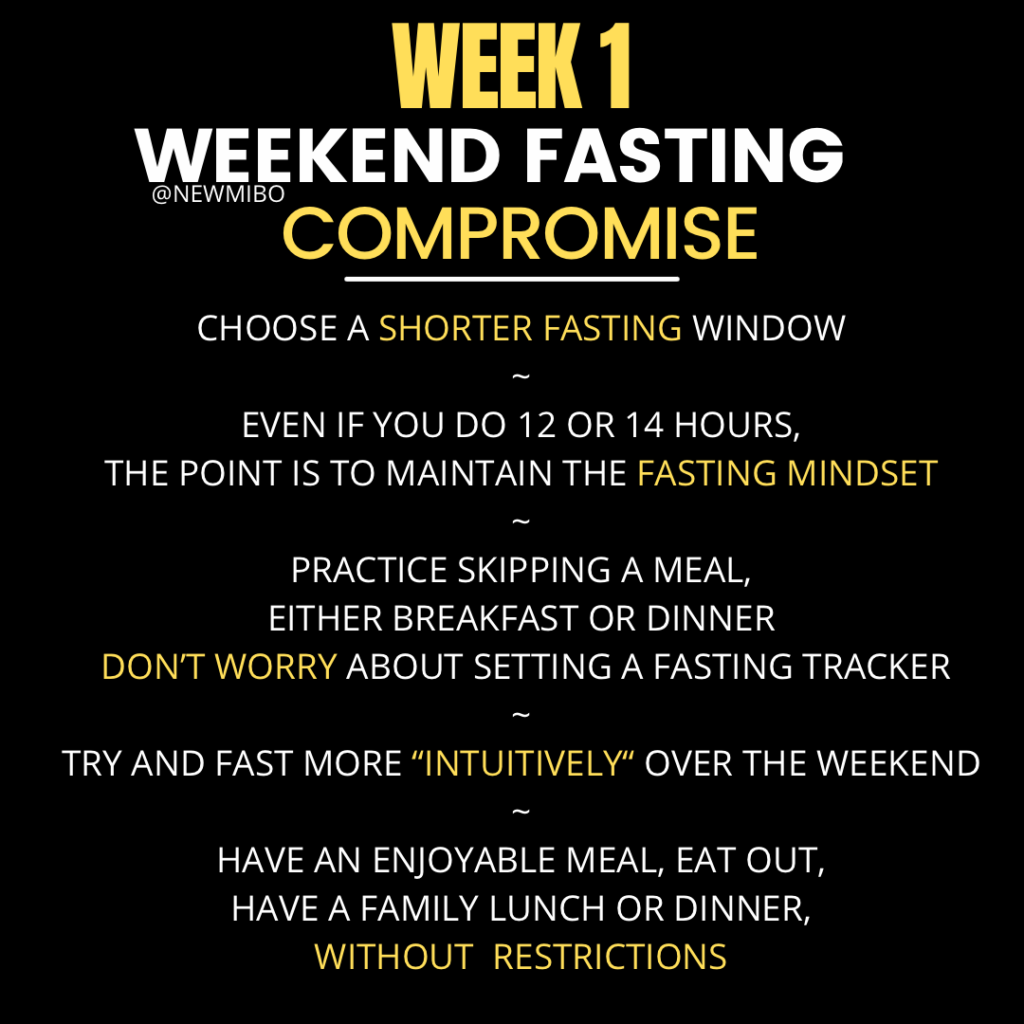
4. BE PREPARED
As much as fasting is a mental game, there are beverages and practical tools that can make fasting easier.
Stock up on water/plain/carbonated/mineral, tea or coffee, can also be decaf, fresh lemons, limes, apple cider vinegar, electrolytes, sea salt or Himalayan salt.
ADDITIONAL HELPFUL ITEMS:
travel mug, flask, sugar free chewing gums, hot water bottle, Epsom bath salts, Magnesium
If you go to work take a flask with your preferred beverage so that you can sip on it throughout the day. Being prepared will prevent you from impulsively reaching for snacks. A flask comes in handy even if you’re staying at home, keep it filled so you can have a sip whenever you feel peckish. Some people might experience cold hands and feet which is where a hot water bottle comes in use. Additionally, you can treat yourself to an Epsom salt bath which also provides some magnesium for your body, helps relax your muscles, warms you up and keeps you away from the kitchen.
EMERGENCY ITEMS:
coconut oil or some form of pure fat, full fat milk, coconut or full fat cream
Please read this post about fat fasting if you’re not sure how to do it.
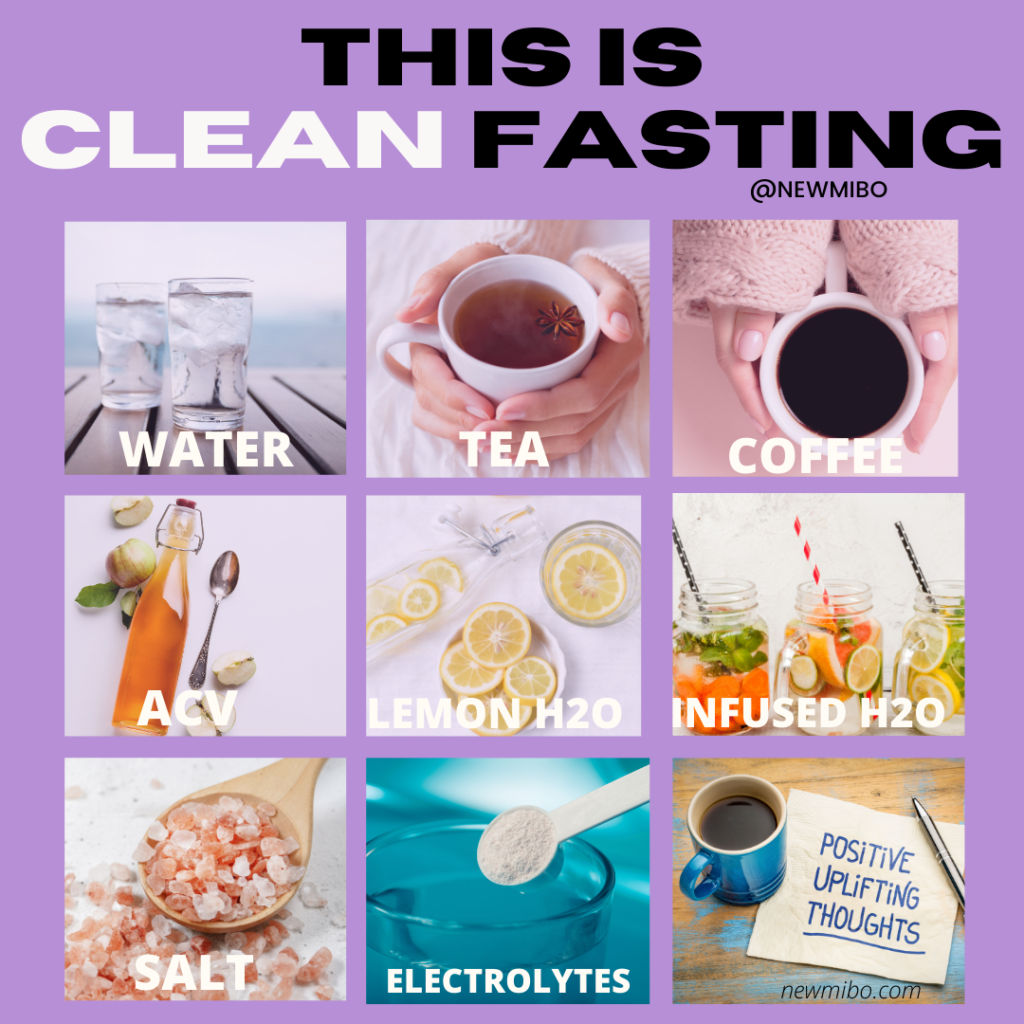

5. PLAN YOUR FAST
No one likes to feel that they’re missing out on something, so instead of completely removing a meal from your day, replace it with a hot beverage. For example: if you’re going to skip your breakfast meal, plan on having a large cup of green tea or black coffee instead. Sit down, sip it slowly, join your family, think of it as your breakfast. Repeat the same principle for lunch. Instead of sitting by yourself empty handed, trying to hide from others who are eating, plan what you can have; which could be a large cup or black coffee, tea or warm infused lemon water. Think of your beverage as lunch.
In the evening you can make yourself a flask of warm lemon water to replace TV snacks. It will be much easier sipping on a hot beverage than just sitting there watching others dipping into their popcorn.
Plan your fasting beverages as you would meals.
6. KNOW YOUR WHYS
Write down a list of reasons as to why you decided to take up intermittent fasting. Do this on your first day when your feelings are the most authentic and true. Trust me this list will come into play later on.
Write 10 reasons, make it personal and honest, it is for your eyes only.
For example:
I want to be in control of my mind and body.
I don’t want food controlling me.
I’m fed up with feeling helpless.
I’ve gained a bit/a lot of weight and it’s time for it to go.
I need some structure in my life, in my habits.
I feel I’ve lost all my confidence and I’m taking charge now.
…
Congratulations on wanting to challenge yourself, simple doesn’t mean easy, just keep going. Thank you for stopping by xox
ADDITIONAL READING
How to start intermittent fasting
The Complete Guide to Fasting, 2016, Dr Jason Fung with Jimmy Moore
AC: The Power of Appetite Correction, 2015, Bert Herring, MD






